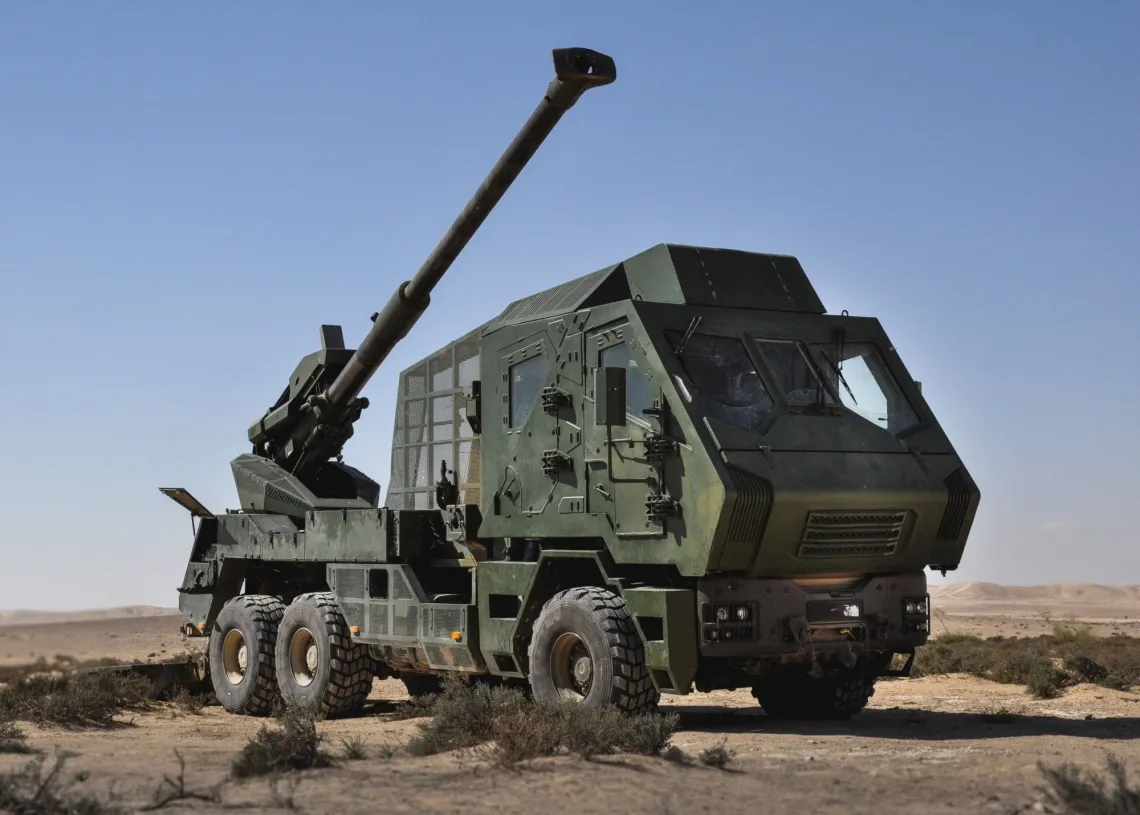RIO DE JANEIRO, BRAZIL – The Brazilian Army has approved and released operational, technical, logistical, and industrial requirements for the purchase of 155 mm wheeled self-propelled howitzers (VBCOAP 155 SR).
Although the armed forces were supposed to release the requirements last February, they were postponed due to delays in other Army projects.
A total of up to 36 of these artillery systems, capable of quickly, efficiently and systematically engaging targets with a range of up to 40 kilometers, are to be procured and will equip two to three artillery divisions and mechanized brigade groups.

REQUIREMENTS
According to the requirements submitted by the Brazilian Army, the units to be procured must have as their main armament a 155 mm howitzer (NATO standard) with a length of at least 52 calibers and a range of at least 20 km with conventional ammunition and 30 km with supported ammunition.
They must also have basic armor that protects the living quarters from penetration by 7.62 x 51 mm caliber projectiles, have a range of more than 500 km on paved roads without the use of additional tanks, and be capable of receiving and accommodating the entire equipped and armed garrison while underway.
They must also be capable of hitting targets with an area accuracy of fewer than 80 meters when firing from 20 km and 120 meters when firing from 30 km, and they must be able to move into position and fire in less than three minutes. The sustained rate of fire must be at least four rounds per minute.
They must also have a targeting system for direction and range and be capable of both direct and indirect fire, as well as direct fire at night. They must have a four-wheel-drive to move on any terrain, a steering, braking, and damping system that allows a maximum speed of 70 km/h on paved roads, and a device attached to all wheels that allow safe driving even when the tires are flat.
They must also have a radar device for instantaneous measurement of initial speed and the conditions for receiving an automatic and independent targeting device for each part, equipped with the search for geographic north and an alternative means of manual input in the event of a failure of data transmission, as well as inertial navigation and global positioning satellite systems (GPS or equivalent) integrated into devices that can provide data on the position and condition of the part through a wireless network.
POTENTIAL COMPETITORS
A number of companies from around the world are expected to show interest in the project, but two of them have already presented their products to the Army: the Israeli company Elbit Systems and the French Nexter Group.
Nexter offers the Caesar (Camion Équipé d’un Système d’artillerie) system, the French Army’s main tube artillery system, which is in service or has been ordered in more than eight countries, most recently in the Czech Republic. The Caesar is equipped with a 155-mm howitzer and 52 calibers and is already in service on the Sherpa 5 and 6A 6X6 and Tatra T815-7 8×8 platforms.
Elbit, for its part, deploys the Atmos system (Autonomous Truck Mounted Howitzer System), which is currently in service in nine countries. This system is equipped with a Soltam artillery gun with a 33, 39, 45 or 52 caliber barrel that can be installed on different platforms such as MAN and Tatra T815-7 6×6 trucks and KamAZ-6350 and Rheinmetall RMMV HX81 8×8 trucks, ensuring great flexibility for the project.
One of the advantages would be that the integration of this system could be carried out on the platform chosen by EB in Brazil by Ares Aeroespacial e Defesa, with the embedded systems of AEL Sistemas, both belonging to Elbit Group, which would ensure in-country logistics and therefore technology transfer.
The 6X6 version of both models could be transported on C-130 Hercules or KC-390 Millennium aircraft, depending on the platform chosen.
With information from Tecnologia & Defesa

